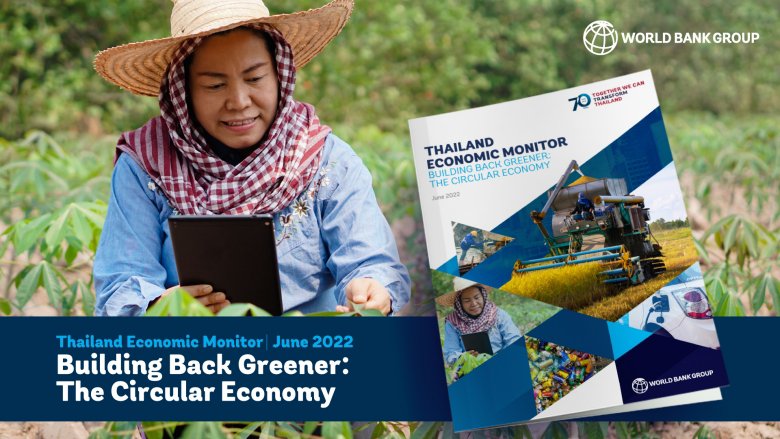Key findings
ThailandˇŻs GDP growth has picked up modestly since the surge in COVID-19 cases last year, but economic activity remained below pre-pandemic levels in the first quarter of 2022.
- Headline inflation has breached the Bank of ThailandˇŻs target range of 1-3%, reaching a 13-year high of 7.1% in May largely due to surging oil prices.
- The fiscal deficit remained substantial at 9.2% of GDP in the first half of fiscal year 2022, and public debt has risen to above 60% of GDP.
- The financial system remains stable overall, though risks associated with increased levels of corporate and household debt persist.
- While poverty and unemployment are estimated to have declined over the past year, labor incomes have fallen and household debt has increased to meet expenditure needs.
The economy is expected to expand by 2.9% in 2022, one percent slower than expected in December 2021, but the recovery will strengthen in the medium term.
- While a small current account deficit is expected for 2022, the resolution of supply bottlenecks, a recovery in tourism arrivals, and a decline in the global oil price is expected to see the current account return to positive territory in 2023 and 2024.
- Headline inflation is projected at 5.2% in 2022, with core inflation at 2.3%.
- Public debt is expected to peak at 62.5% of GDP in fiscal year 2023, slightly above current levels.
- Risks remain skewed to the downside, highlighting the importance of rebuilding fiscal buffers, monitoring financial sector vulnerabilities, and exploring more environmentally sustainable and efficient approaches to economic production.
The circular economy models offer the potential for a more environmentally sustainable and efficient approach to economic production.
- A transition towards a circular economy could increase ThailandˇŻs GDP by about 1.2% and create nearly 160,000 additional jobs by 2030, representing about 0.3% of total employment.
- ThailandˇŻs greenhouse gas emissions could be reduced by about 5% by 2030, and dependence on imported energy would decline, helping to insulate Thailand from high and volatile commodity prices
The report provides a range of recommendations to support the circular economy in Thailand. The following are several actions that can be taken by the government:
- First, develop strong circular economy policy, legal and institutional frameworks
- Second, build institutional capacity and inter and intra agency coordination, including through the establishment of a central circular economy implementation agency
- Third, introduce concerted action and targeted measures to enable missing complementarities, such as reverse logistics, design standards, and incentives to compensate for the risk of innovating in the circular economy
- Lastly, advocacy for circular economy and awareness building on resource intensity, pollution, and resource degradation


